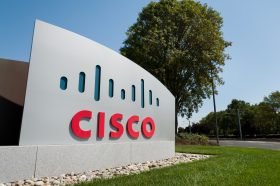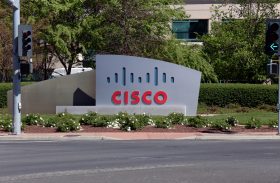Cisco Earnings a Mixed Bag

Cisco's fiscal Q3 2024 earnings yesterday were a mixed bag. First, the good news: While revenues, net income, and EPS were down for the quarter ended April 27, all of that was in line with Cisco’s guidance and analyst expectations.
The big picture wasn't pretty, with a big decline in revenue (which was expected). Sales were $12.7 billion, down 13% year-over-year (y/y); adjusted net income of $3.6 billion was down 14% y/y; and adjusted EPS of 88 cents was down 12%. The recently closed Splunk acquisition added $413 million in revenues for the quarter.
On the bright side, investors had already been warned of the news, and management guided for a return to top-line growth soon. The company projects $13.4 billion to $13.6 billion in sales for Q4, as management expects customers to finish a product digestion cycle by July.
Cisco has also made progress in its efforts to transition to a software business model with subscription-based annual recurring revenue (ARR). ARR growth was $29.2 billion, up 44%, thanks in large part to Splunk, which accounted for the lion’s share of that growth.
And there’s more on the positive side: Security sales were up 36% y/y, and Cisco’s observability segment saw a 27% increase in sales, thanks to its ThousandEyes services and Splunk’s contribution. (Sans Splunk, observability would have grown 14% for the quarter.)
The Splunk Conundrum
A mixed market reaction shows that investors remain unconvinced of the growth story. Although Cisco shares initially rose 5% in the after-hours market after earnings, they fell 2.7% in trading on Thursday, dropping $1.33 to $48.34.
The bottom line is that nobody seems to know what to make of the Splunk deal yet—or how it fits into Cisco's other businesses. Though it added to revenues, the costs of the acquisition reduced EPS. And that will continue, management said.
“Our Q4 guidance includes 950 million to 1 billion in revenue from Splunk and non-GAAP EPS of negative $0.03 as the interest impact more than offsets the operating benefit,” said Cisco CFO Scott Herren on the earnings conference call.
That didn’t sit well with some analysts. “Splunk – a Bit Disappointing for Us…,” wrote George Notter of Jefferies in a note. “For July, they guided Splunk to $950M to $1.0B in sales. We note that Street estimates for Splunk’s July quarter called for $1.065B in sales. Also, we now realize that there ARE cost synergies from the transaction, yet Cisco will be re-investing those benefits into the merger integration.”
Others view the Splunk merger a bit differently. “Splunk dilutes EPS in FY25 by ~$0.03 per quarter from interest expenses and lost interest income,” wrote Raymond James’s Simon Leopold in his note. But: “Cisco has identified 5,000 of its customers that were not Splunk customers and are targets for incremental sales synergies that we expect presents an FY26 opportunity.”
“Cisco's FY25 revenue and earnings outlook including Splunk appear quite conservative,” wrote Mike Genovese of Rosenblatt. “Organic sales expectations look to be unchanged, as all the incremental revenue being added to the model comes from Splunk.”
Cisco CEO Chuck Robbins projected optimism on Splunk. He sees it as an opportunity to sell Splunk products to 5,000 of its customers who don’t yet have them. “... we're excited about the fact that, basically, we've identified these 5,000 customers where Splunk traditionally has had no footprint," said Robbins on the earnings call. "And the goal there is to have the Cisco sellers open the door for the Splunk team. There's also a financial incentive or SPIFF in place to incent the Cisco sellers to support this activity,” said Gary Steele, former CEO of Splunk who is now Cisco President of Go-to-Market.
Bottom line? The Splunk acquisition is currently boosting sales but weighing on the EPS, making it an overall disappointment so far.
Network Sales Decline, AI Promises
Ironically, Cisco’s biggest segment, networking, which accounts for 51% of the company’s revenue, was down a whopping 27% for the quarter. At the same time, Cisco anticipates $1 billion in AI pipeline orders for the full fiscal year 2025. Those anticipated orders are for switches based on Cisco’s Silicon One chips, primarily for hyperscaler back-end infrastructure.
“We also continue to capitalize on the multibillion-dollar AI infrastructure opportunity,” said Robbins on the earnings call. “In web scale, we continue to see momentum with three of the top four hyperscalers deploying our Ethernet AI fabric leveraging Cisco-validated designs for AI infrastructure. In the past two quarters, Cisco has been granted additional design awards based on our 51.2 terabit G200 Silicon One ASIC. We expect these awards to yield orders in fiscal year '25, reinforcing our confidence in our line of sight to $1 billion of AI product orders in fiscal '25.”
Futuriom Take: Cisco’s earnings didn’t exactly disappoint, but they didn’t energize the market either. Much is riding on whether Cisco can realize substantial synergies with Splunk sales, and whether it can come through with the AI infrastructure it’s counting on.

















